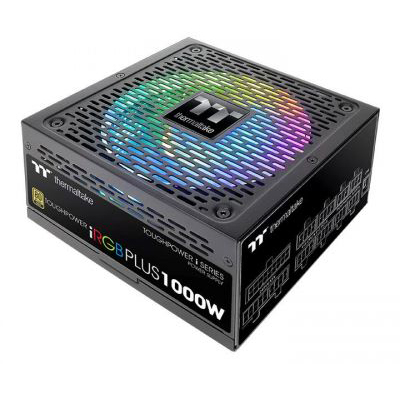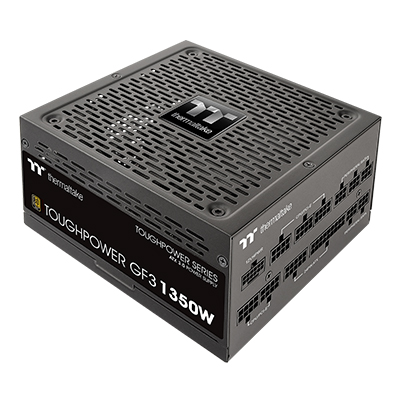
-
Designed with a native PCIe 12+4pin connector, the Toughpower GF3 series is compatible with Intel ‘s ATX 3.0 specification and is built for next-gen PCIe 5.0 graphics cards.
The wattage marked on 12VHPWR’s connector is the recommended wattage. (Ref. Intel design guideline) The native 16 PIN (12VHPWR) PCIe connector of GF3 1200W can deliver up to 600W for PCIe 5.0 graphics cards.
Note: Recommended wattage is an estimation of system power demand. Actual power demands may vary based on specific components, usage, and many other factors. -
Designed with a native PCIe 12+4pin connector, the Toughpower GF3 series is compatible with Intel ‘s ATX 3.0 specification and is built for next-gen PCIe 5.0 graphics cards.
The wattage marked on 12VHPWR’s connector is the recommended wattage. (Ref. Intel design guideline) The native 16 PIN (12VHPWR) PCIe connector of GF3 1000W can deliver up to 600W for PCIe 5.0 graphics cards.
Note: Recommended wattage is an estimation of system power demand. Actual power demands may vary based on specific components, usage, and many other factors. -
Designed with a native PCIe 12+4pin connector, the Toughpower GF3 series is compatible with Intel ‘s ATX 3.0 specification and is built for next-gen PCIe 5.0 graphics cards.
The wattage marked on 12VHPWR’s connector is the recommended wattage. (Ref. Intel design guideline) The native 16 PIN (12VHPWR) PCIe connector of GF3 850W can deliver up to 450W for PCIe 5.0 graphics cards.
Note: Recommended wattage is an estimation of system power demand. Actual power demands may vary based on specific components, usage, and many other factors. -
Designed with a native PCIe 12+4pin connector, the Toughpower GF3 series is compatible with Intel ‘s ATX 3.0 specification and is built for next-gen PCIe 5.0 graphics cards.
The wattage marked on 12VHPWR’s connector is the recommended wattage. (Ref. Intel design guideline) The native 16 PIN (12VHPWR) PCIe connector of GF3 750W can deliver up to 300W for PCIe 5.0 graphics cards.
Note: Recommended wattage is an estimation of system power demand. Actual power demands may vary based on specific components, usage, and many other factors.










